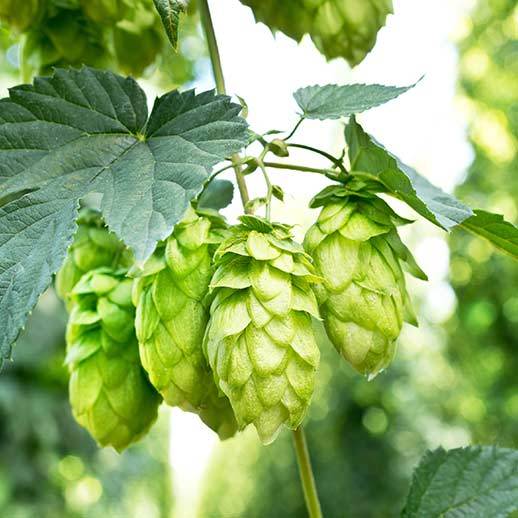
HUMULUS LUPULUS
Hops
Foundational Support
Stress Support
Women
Sleep Support
WHAT IS IT?
There are about 170 species in the Cannabaceae family but the Hops plant and the cannabis plant are without a doubt winning the popularity contest. Hops are
WHAT IS IT USED FOR?
The resins contained in hops flowers lupulin and humulin have been linked with normalizing bacterial growth and contribute to the use of hops in the fermentation process
More products with Hops
Active Consituents
Volatile oils; humulene, geraniol, linalol, myricin, luparol, luparenol. Bitter Resin complexes; valerianic acid, humulon, lupulon. Tannins, estrogenic substances, asparagine, and choline.
Parts Used
Strobiles (flowers)
Additional Resources
Hansel, R., Schmidt, H., and Wohlfart, R. (1983) Planta Medica, Stuttgart, 48, pp.120-23 Unger, Richard W. (2004). Beer in the Middle Ages and Renaissance. University of Pennsylvania Press. pp. 100. The pharmacognosy of Humulus lupulus L. (hops) with an emphasis on estrogenic properties L. R. Chadwick, G. F. Pauli, N. R. Farnsworth Phytomedicine. Author manuscript; available in PMC 2007 April 17. Published in final edited form as: Phytomedicine. 2006 January; 13(1-2): 119–131. Published online 2005 July 1. doi: 10.1016/j.phymed.2004.07.006 PMCID: PMC1852439
Important Precautions
Not for use during pregnancy. If you have a medical condition or take pharmaceutical drugs please consult your doctor prior to use.
Disclaimer
This information in our Herbal Reference Guide is intended only as a general reference for further exploration, and is not a replacement for professional health advice. This content does not provide dosage information, format recommendations, toxicity levels, or possible interactions with prescription drugs. Accordingly, this information should be used only under the direct supervision of a qualified health practitioner such as a naturopathic physician.
Why Gaia Herbs?
Plant-Powered
Harnessing traditional wisdom, delivering Nature's vitality
Potent
Full spectrum formulas for an herb's full array of beneficial compounds
Purity Tested
All products are screened for pesticides, microbes & heavy metals
Transparent
Know what's in your supplement— Meet Your Herbs to learn more